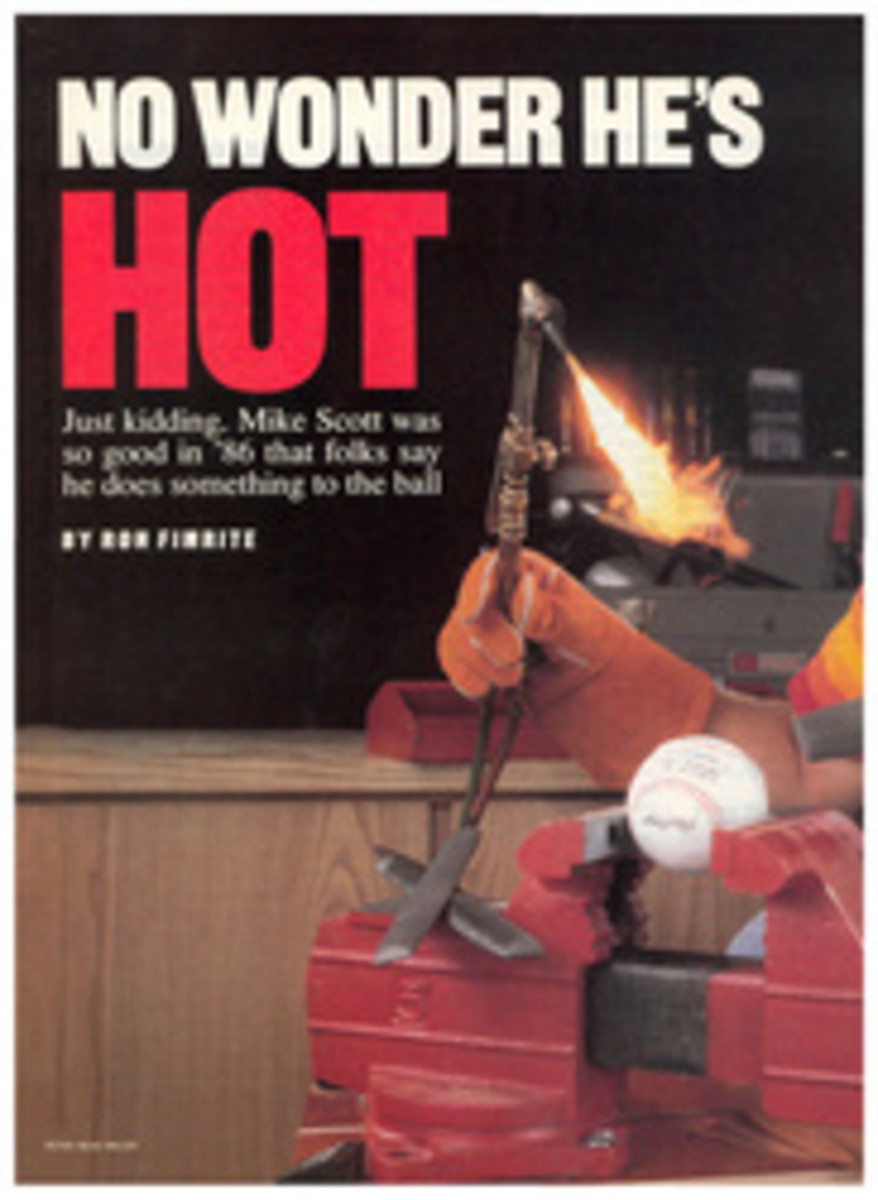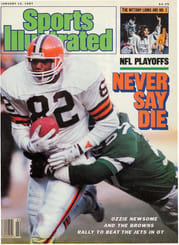
SUNK BY A SLAM DUNK
A tenth of a knot to windward can make you look real smart.
JOHN KOLIUS
Skipper of America II
The smartest-looking sailor in Fremantle, Western Australia, this week is Dennis Conner. Sometime during the 12-day break that preceded the start of the best-of-seven semifinal series for the Louis Vuitton Cup, the four-month-long regatta to select the challenger for the America's Cup, Conner and his brain trust found that elusive extra tenth of a knot of speed, maybe even two. Stars & Stripes, Conner's blue 12-meter from the San Diego Yacht Club, rolled over Tom Blackaller's USA in four straight races and now will face New Zealand and Chris Dickson in the challenger final, starting Jan. 13.
The semifinal matchup of Conner and Blackaller, the last remaining American challengers in Fremantle, promised more than it delivered. Blackaller's radical, front-ruddered boat had begun to measure up to its apparent potential in the last days of the third round-robin. Because no one, including Blackaller, knew the limits of that potential, a juicy upset, enhanced by the personal rivalry of the two California skippers, seemed possible.
The first race was close—Stars & Stripes won by 10 seconds—but it was also somewhat misleading. The conditions—a moderate 15-to-18-knot breeze and smooth seas at the start—favored USA, and on the first beat to windward she moved into a two-boat-length lead. For the next three hours USA maintained that lead, give or take a boat-length. Only on the last beat, when Blackaller mistimed a "slam dunk" tack, was Conner able to slip past to win.
Sailing's slam dunk, like basketball's, is a virtually undefendable maneuver when it is done correctly, but not many sailors can pull it off. It occurs when two boats are converging on opposite tacks. The boat in the lead tacks while crossing the bow of the trailing boat, leaving it trapped in a "wind shadow." The only choice for the trailing boat is to bear away for clear air, thereby losing time and distance to the next mark.
By hesitating for a second in the middle of his tack, Blackaller gave Conner a chance to escape the trap. "It's like not making a corner right [in a racing car]," said Blackaller. "You go just a little bit wrong, and the other guy busts out."
In match racing the slower of two boats can win if it somehow manages to get the lead, because from that point on, a skilled helmsman, with tight covering and a bit of luck, can close off the passing lanes to his speedier opponent. Until the mistimed slam dunk late in the race, Blackaller held Conner at bay, thereby postponing temporarily the unveiling of Stars & Stripes' newfound speed.
The day of reckoning, however, was close at hand, and in the next three races USA was trounced. Stars & Stripes, aided by a couple of big wind shifts, blew USA out of the water by 3:02 the second day, won fair and square on boat speed the third day (2:23), and finished first on the fourth day by :43.
"Somehow Dennis jumped from being behind us about a tenth of a knot I in the third round-robin] to being ahead of us a tenth," said Blackaller after the third race. "He's found the magical two-tenths VMG [velocity made good toward the mark], which anybody who's in this game knows is a damned hard thing to find."
Smiling like a cat who has just wiped the last canary feather from his whiskers, Conner arrived at his victory press conference wearing a new, star-spangled rugby shirt. "Dennis is a much more dangerous opponent when he is confident." said Bruno Troublè, a two-time America's Cup skipper.
If the same cannot be said of Chris Dickson, New Zealand's 25-year-old skipper who will face Conner in the final, it is only because Dickson has not yet been caught with his game face down. Having plowed under French Kiss in four straight in the semis, New Zealand now has a 37-1 race record compared with Stars & Stripes' 31-7.
The third race of the New Zealand-French Kiss series was yet another example of just how hard it is to beat the Kiwis. At the first leeward mark a spinnaker pole fitting failed on the Kiwi boat, and she was forced to round the mark with her chute still up, wrapped around the jib, and her pole dragging in the water. While the Kiwis sorted out the mess, French Kiss took a four-boat-length lead, and at the top mark, as her lipstick-red spinnaker was hoisted for the downwind run, the French led by 23 seconds.
As usual, however, the Kiwis held on. In spite of fresh breezes and high seas, conditions that make French Kiss look her best, New Zealand trailed by only 22 seconds at the last-mark rounding. On the final beat, Dickson launched a tacking barrage, one tack every 40 or 50 seconds, that ate away at the French boat's lead. Finally, when he was only a few feet behind, Dickson dipped under Kiss's stern. The French skipper, Marc Pajot, tried a slam dunk, but Dickson slipped through and then was able to luff up into the wind until Pajot, by failing to head up in time, "caused" (under the rules that determine who has the right of way at any given moment) a collision. New Zealand sailed on to win by 13 seconds.
"Today we got ze Kiwi kees," said Pajot, charming to the end.
Dickson's psychological armor, which has been under microscopic examination for nearly four months, seems chinkless. "I see Dennis as a competitor with 10 years of experience in this game to my 10 months," said Dickson, looking ahead to the challenger finals against a man 19 years his senior. "We've learned a lot from him, and we'll keep learning a lot from him.... If he goes quicker than us on the first beat of the first race, we'll be looking. By the time we get to the bottom mark we'll have figured out why he was quicker...and he won't go up the second beat quicker."
So there you have the Louis Vuitton Cup final: the old master versus the child prodigy. If Stars & Stripes and New Zealand are equal, or nearly equal, in speed, as their skippers keep insisting they are, the contest will be one of helmsmanship, seamanship and gamesmanship, and whoever survives will be well prepared for the America's Cup finals, starting Jan. 31.
Also preparing for the Cup, albeit in a singularly Australian and somewhat fratricidal fashion, are the defenders. With 13 races of the 15-race fourth round-robin out of the way, Australia IV, Alan Bond's entry, and Kevin Parry's Kookaburra III were tied for first at 71 points. Parry's second boat, Kooka II, was in third place at 64 points.
Because only two boats will advance to the defender's final, the brawl on the water and in the protest room between the Bond and Parry camps has been chaotic. Since Oct. 25, 37 protests have been lodged by the defenders. However, Warren Jones, Bond's strong right arm, warned the challengers against making too much of a family feud. "If they think we do not have a unified front," Jones said last week, "they are making a big mistake."
PHOTO
BILL EPPRIDGE
Blackaller's boat (US61) led Conner & Crew for most of Race 1 but lost by hesitating.
PHOTO
DAN NERNEY/DOT
The French (left) bumped and got "ze Kiwi kees."
PHOTO
BILL EPPRIDGE
But can Old Man Conner, even in his new threads, outshine young Dickson (left)?

